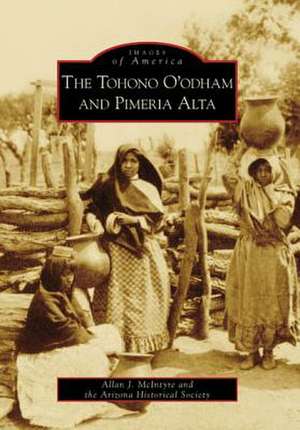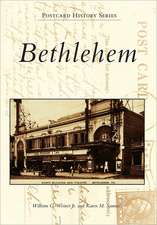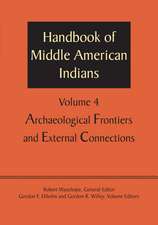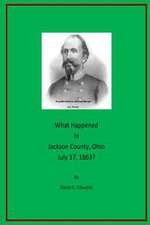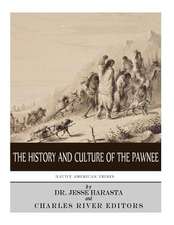The Tohono O'Odham and Pimeria Alta: Images of America (Arcadia Publishing)
Autor Allan J. McIntyre, Arizona Historical Societyen Limba Engleză Paperback – 31 mar 2008
| Toate formatele și edițiile | Preț | Express |
|---|---|---|
| Paperback (1) | 133.00 lei 3-5 săpt. | |
| Arcadia Publishing (SC) – 31 mar 2008 | 133.00 lei 3-5 săpt. | |
| Hardback (1) | 181.89 lei 6-8 săpt. | |
| – | 181.89 lei 6-8 săpt. |
Din seria Images of America (Arcadia Publishing)
-
 Preț: 133.17 lei
Preț: 133.17 lei -
 Preț: 133.00 lei
Preț: 133.00 lei -
 Preț: 131.94 lei
Preț: 131.94 lei -
 Preț: 133.00 lei
Preț: 133.00 lei -
 Preț: 133.00 lei
Preț: 133.00 lei -
 Preț: 127.20 lei
Preț: 127.20 lei -
 Preț: 127.39 lei
Preț: 127.39 lei -
 Preț: 132.35 lei
Preț: 132.35 lei -
 Preț: 173.20 lei
Preț: 173.20 lei -
 Preț: 117.50 lei
Preț: 117.50 lei -
 Preț: 132.54 lei
Preț: 132.54 lei -
 Preț: 118.13 lei
Preț: 118.13 lei -
 Preț: 133.17 lei
Preț: 133.17 lei -
 Preț: 131.94 lei
Preț: 131.94 lei -
 Preț: 128.26 lei
Preț: 128.26 lei -
 Preț: 133.00 lei
Preț: 133.00 lei -
 Preț: 133.17 lei
Preț: 133.17 lei -
 Preț: 133.00 lei
Preț: 133.00 lei -
 Preț: 131.94 lei
Preț: 131.94 lei -
 Preț: 133.41 lei
Preț: 133.41 lei -
 Preț: 127.20 lei
Preț: 127.20 lei -
 Preț: 131.94 lei
Preț: 131.94 lei -
 Preț: 120.40 lei
Preț: 120.40 lei -
 Preț: 131.72 lei
Preț: 131.72 lei -
 Preț: 127.20 lei
Preț: 127.20 lei -
 Preț: 131.94 lei
Preț: 131.94 lei -
 Preț: 132.76 lei
Preț: 132.76 lei -
 Preț: 131.94 lei
Preț: 131.94 lei -
 Preț: 136.28 lei
Preț: 136.28 lei -
 Preț: 127.39 lei
Preț: 127.39 lei -
 Preț: 133.17 lei
Preț: 133.17 lei -
 Preț: 133.00 lei
Preț: 133.00 lei -
 Preț: 133.41 lei
Preț: 133.41 lei -
 Preț: 117.72 lei
Preț: 117.72 lei -
 Preț: 133.17 lei
Preț: 133.17 lei -
 Preț: 117.72 lei
Preț: 117.72 lei -
 Preț: 133.00 lei
Preț: 133.00 lei -
 Preț: 128.26 lei
Preț: 128.26 lei -
 Preț: 132.13 lei
Preț: 132.13 lei -
 Preț: 132.13 lei
Preț: 132.13 lei -
 Preț: 131.94 lei
Preț: 131.94 lei -
 Preț: 131.94 lei
Preț: 131.94 lei -
 Preț: 133.41 lei
Preț: 133.41 lei -
 Preț: 133.41 lei
Preț: 133.41 lei -
 Preț: 131.94 lei
Preț: 131.94 lei -
 Preț: 118.31 lei
Preț: 118.31 lei -
 Preț: 127.61 lei
Preț: 127.61 lei -
 Preț: 131.94 lei
Preț: 131.94 lei -
 Preț: 131.94 lei
Preț: 131.94 lei -
 Preț: 133.41 lei
Preț: 133.41 lei
Preț: 133.00 lei
Nou
Puncte Express: 200
Preț estimativ în valută:
25.45€ • 27.21$ • 21.22£
25.45€ • 27.21$ • 21.22£
Carte disponibilă
Livrare economică 28 martie-11 aprilie
Preluare comenzi: 021 569.72.76
Specificații
ISBN-13: 9780738556338
ISBN-10: 0738556335
Pagini: 127
Dimensiuni: 165 x 236 x 9 mm
Greutate: 0.32 kg
Editura: Arcadia Publishing (SC)
Seria Images of America (Arcadia Publishing)
ISBN-10: 0738556335
Pagini: 127
Dimensiuni: 165 x 236 x 9 mm
Greutate: 0.32 kg
Editura: Arcadia Publishing (SC)
Seria Images of America (Arcadia Publishing)
Descriere
The Tohono O'odham have lived in southern Arizona's Sonoran Desert for millennia. Formerly known as the Papago, the people, acting as a nation in 1986, voted to change the colonial applied name, Papago, to their true name, Tohono O'odham, a name literally meaning "desert people." Living within a region the Spanish termed Pimeria Alta, the Tohono O'odham, from the time of Spanish Jesuit Kino's first missionary efforts in the late 1680s, have been witness to numerous governmental, philosophical, and religious intrusions. Yet throughout, they have adapted and survived. Today the Tohono O'odham Nation occupies the second largest land reserve in the United States, covering more than 2.8 million acres. The images in this volume date largely between 1870 and 1950, a period that documents great change in Tohono O'odham traditions, culture, and identity.
Recenzii
Title:
Author:
Publisher: News from the Indian Country
Date: 12/23/2008
The pages of The Tohono Oaodham and Pimeria Alta depict the lifeways of these Arizona tribal nations in black-and-white, historical photographs. These detailed photographs show the heritage of these noble people and juxtapose their traditional culture with the impact of contact and assimilation. Some of these images illustrate the dances and regalia of the tribe, while others present the people in the clothing and practices of their colonizers. As a result, these pictures provide a powerful means of examining historical, social and political transitions within these tribes.
Extensive captions describe the individuals, landscapes and focal points of each picture. Skillful commentary explains the conditions and situations that inspired the events contained in these photographs. As a result, the pictures are indeed worth a thousand words, yet the captions enhance the readeras comprehension of the meaning of their content and the importance of their subjects. This book is a valuable introduction to these people and to their culture, as captured through the photographeras lens.
Author:
Publisher: News from the Indian Country
Date: 12/23/2008
The pages of The Tohono Oaodham and Pimeria Alta depict the lifeways of these Arizona tribal nations in black-and-white, historical photographs. These detailed photographs show the heritage of these noble people and juxtapose their traditional culture with the impact of contact and assimilation. Some of these images illustrate the dances and regalia of the tribe, while others present the people in the clothing and practices of their colonizers. As a result, these pictures provide a powerful means of examining historical, social and political transitions within these tribes.
Extensive captions describe the individuals, landscapes and focal points of each picture. Skillful commentary explains the conditions and situations that inspired the events contained in these photographs. As a result, the pictures are indeed worth a thousand words, yet the captions enhance the readeras comprehension of the meaning of their content and the importance of their subjects. This book is a valuable introduction to these people and to their culture, as captured through the photographeras lens.
Notă biografică
Author Allan J. McIntyre is a historian and an art dealer specializing in the American Southwest prior to 1950. As an archaeologist and a museum collections manager for over 25 years, McIntyre became interested in Tohono O'odham history in attempting to understand connections with their prehistoric ancestors, the Hohokam. The photographs and illustrations used in this volume derive almost exclusively from the extensive archives of the Arizona Historical Society, Southern Division, in Tucson, Arizona.
